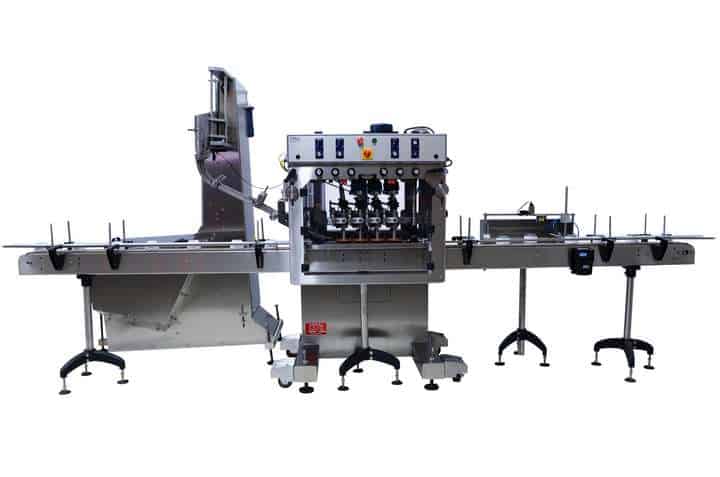A bottle capping machine is used in industrial production lines to securely apply caps, lids, or plugs to bottles and other containers. The type and design of the cap tightener machine depend on the caps or lid it handles. Some are designed to be flexible enough to securely fix plastic, metallic, or glass lids on bottles and containers.

That said, technology has been evolving rapidly, and automation has dramatically impacted the entire industrial sector. Machines used in the production lines have been getting smarter with time, and the trend is just getting better. Below, we explore the five aspects of control systems and automation that have constantly innovated capping machines and the production line in general.
1. Smaller but Smarter Architectural Footprints
Over the years, technology has been advancing rapidly. Nowadays, there are modern, smaller, and smarter bottle cappers that come with advanced features. Manual and semi-automatic capping machines are less efficient compared to their automated counterparts. However, the previous generation of automatic capping machines was also bulky and expensive.
Today, this has changed for the better. Automatic capping machines in the market are lighter, cost-effective, and more versatile. They can be adjusted easily to suit various bottle types and to cap at faster or slower speeds. The smaller architectural footprints also mean lower energy consumption and smaller real estate it needs.
2. Distributed Motion Control
In every production line, motion control is necessary to manage how products move from one point to the other. For the Gen 3 capping machines and newer models, motion can easily be distributed to individual devices. This wasn’t the case a decade ago, where motion control was linear with slow and inefficient processes.
Some of the best capping systems in the market allow for synchronization with other machines. They communicate with them and can work in unison at a predetermined speed. Coupled with the high level of automation, distributed motion control has made capping and packaging a seamless process.
3. Variable Speed Operation
Not so long ago, the speed of production in the industrial sector was limited to a few predetermined levels. Today, this has changed. With a simple push of a button, it’s possible to change the speed at which a capping machine tightens or secures a cap onto a container. This versatility and convenience have been made possible, thanks to variable speed drives.

Speed drives are devices used to control the torque (force) and speed of an Ac motor. By adjusting the motor’s voltage and input frequency, it’s possible to change how fast the capping work is done. These speed drives can either be mechanical, electric, electronic, or even hydraulic. Advancements in technology have further made this technology more convenient. For instance, boosting power factor and energy efficiency.
4. Packaging Line Automation
An automatic bottle capping machine is not really efficient unless it integrates with other packaging machines in the production line. A fully automated packaging line allows for maximum production efficiency. That said, automation and control systems have made this level of innovation possible. Nowadays, companies invest in one machine that fills, caps, and labels the bottles ready for packaging.
The type of machine you first introduce into the packaging line will often determine the next one you will buy. This is especially the case if that first machine is fully automatic and expensive. So, always go for a flexible device and one that can integrate well with other machine types.
Go with the Flow: Embrace Technology and Automation
If you want to buy a capping machine, it only makes sense to embrace the five automation aspects highlighted above. The most advanced bottle capping machines in the market will feature the best tech-enabled features. However, they may be a bit costly. Always consider your unique needs, such as product demand and the need for future expansion, before making a buy. If you are on a budget, a Gen 3 bottle capper with all the necessary automation aspects will work for you.





